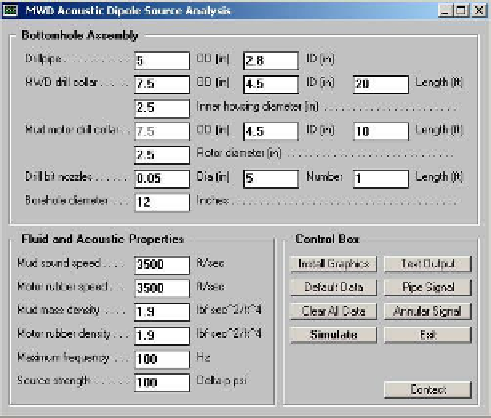Geology Reference
In-Depth Information
Figure 10.3.
Six-segment acoustic waveguide assumptions.
10.1.2 Telemetry design using FSK.
We have emphasized that signals are created at the siren or positive pulser
that travel both upward and downward as the valve opens and closes. Those
traveling downward reflect at the drill bit and add to later upgoing signals and
will, in general, interfere constructively or destructively in a more or less
random manner (transmissions also enter the annulus, as explained previously).
When a phase-shift-keying (PSK) scheme is employed, ghost reflections are
created which also travel uphole, confusing and degrading surface signal
processing. While we have developed schemes such as those in Chapter 5 to
recover true, fully transient 'p(t)'s from net downhole signals, it is best,
whenever possible, to avoid PSK methods to begin with. Methods based on
constant frequencies, which we term “optimized FSK,” are therefore ideal.
There are no distracting phase shifts to deconvolve - waves of the assumed
frequency are always found everywhere, although their amplitudes will vary -
surface reflection removal is also necessary to decipher transmissions properly.
To provide concrete results, we select a baseline frequency of 60 Hz and
locate the mud siren 5 ft from the bottom of the MWD collar, that is, 5 ft + 10 ft
or 15 feet from the drillbit. The time required for the downgoing pulser signal to
reflect upward and interact with later upgoing signals - a requirement for
constructive interference - is 2 (15 ft)/ 3,500 ft/sec or 0.00857 sec. Now, since
our frequency is 60 Hz, as suggested by the results of Figure 10.2a,b,c, each
wave cycle is 0.0167 sec long. Suppose we wish to achieve 10 bps in a FSK
scheme. One possible way to transmit the binary sequence “ 1 - 0 - 1 - 0 - 1 -
0 -1 - 0 - 1 - 0” in one second would be our alternating of carrier frequencies

Search WWH ::

Custom Search